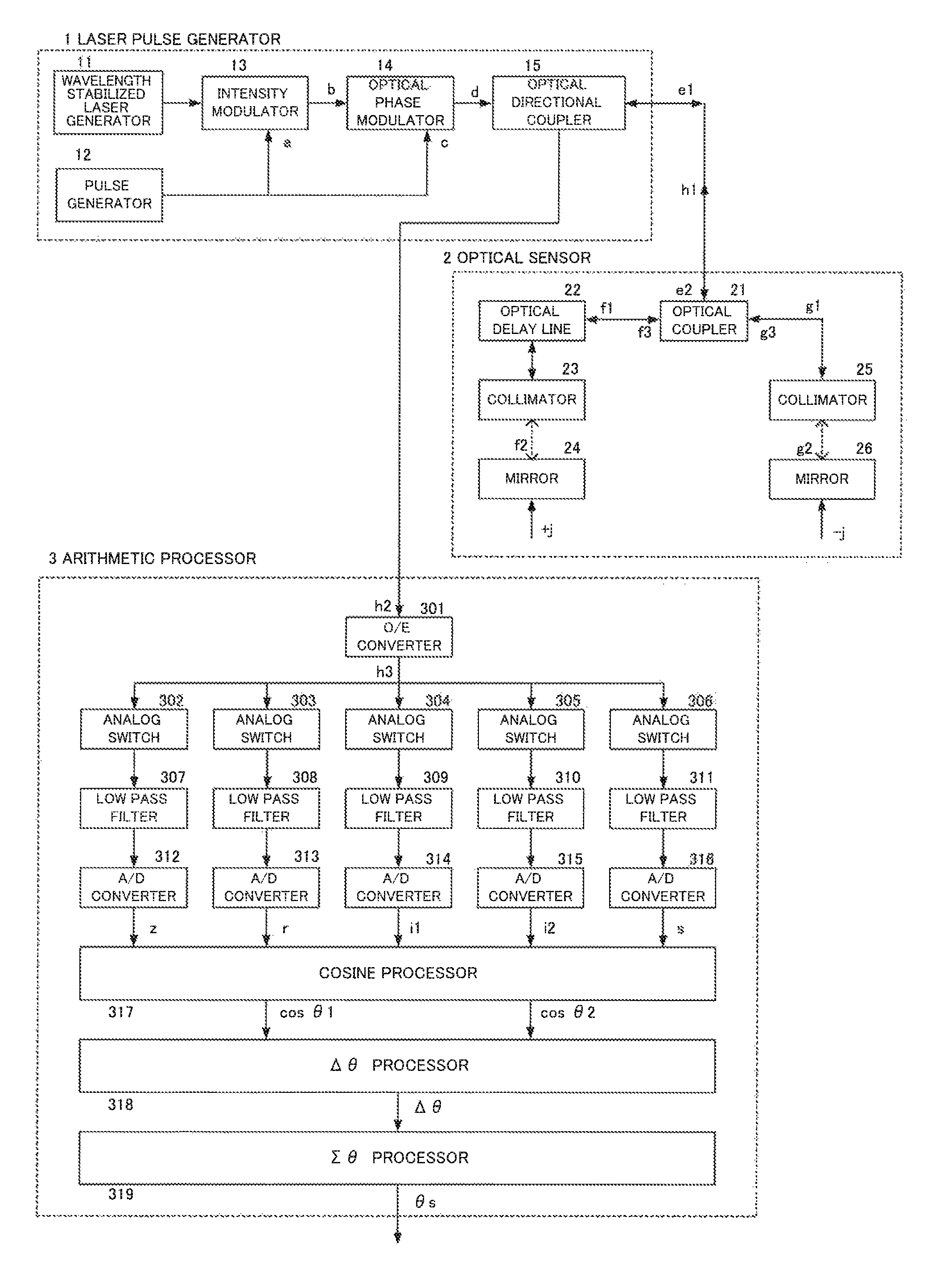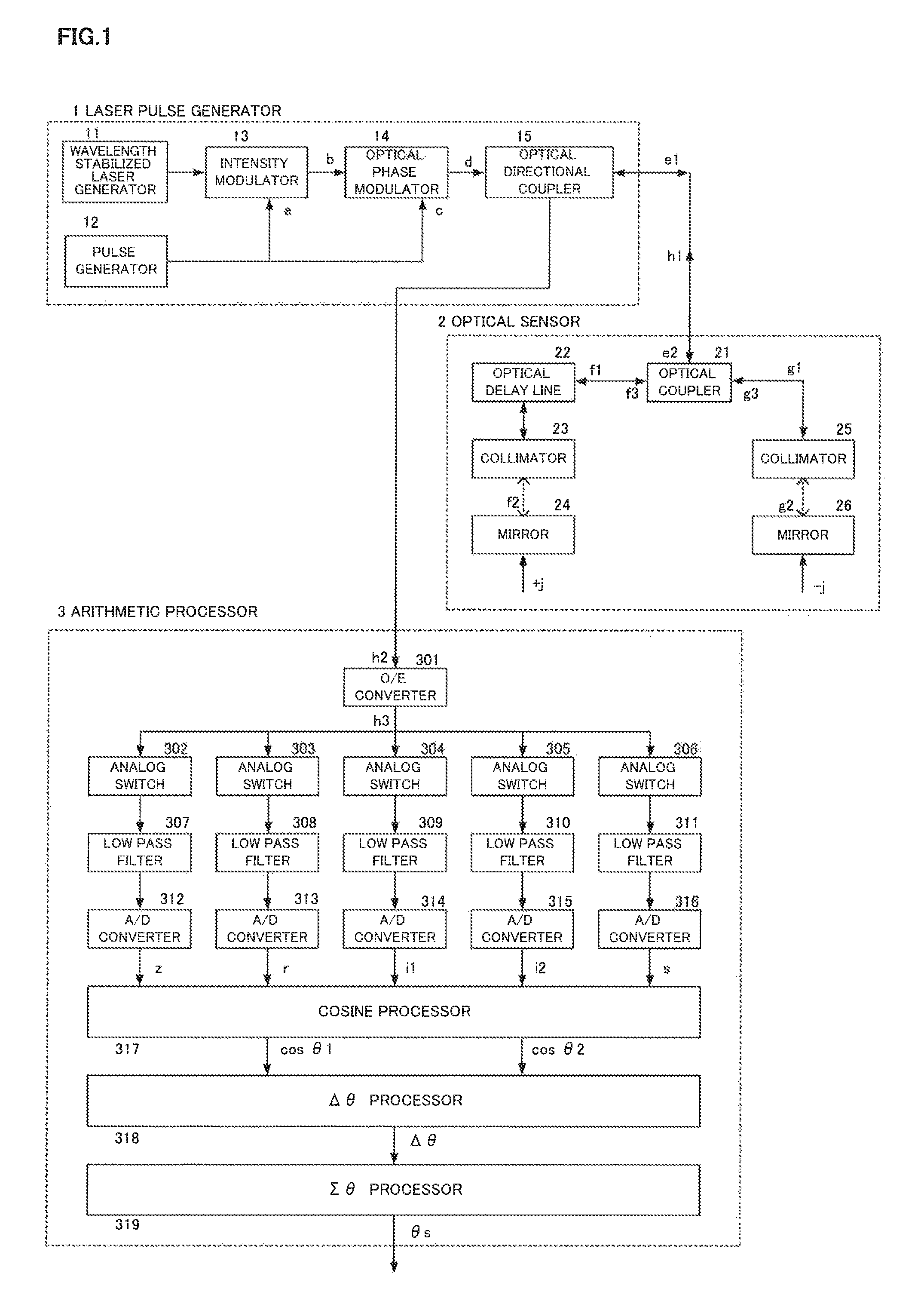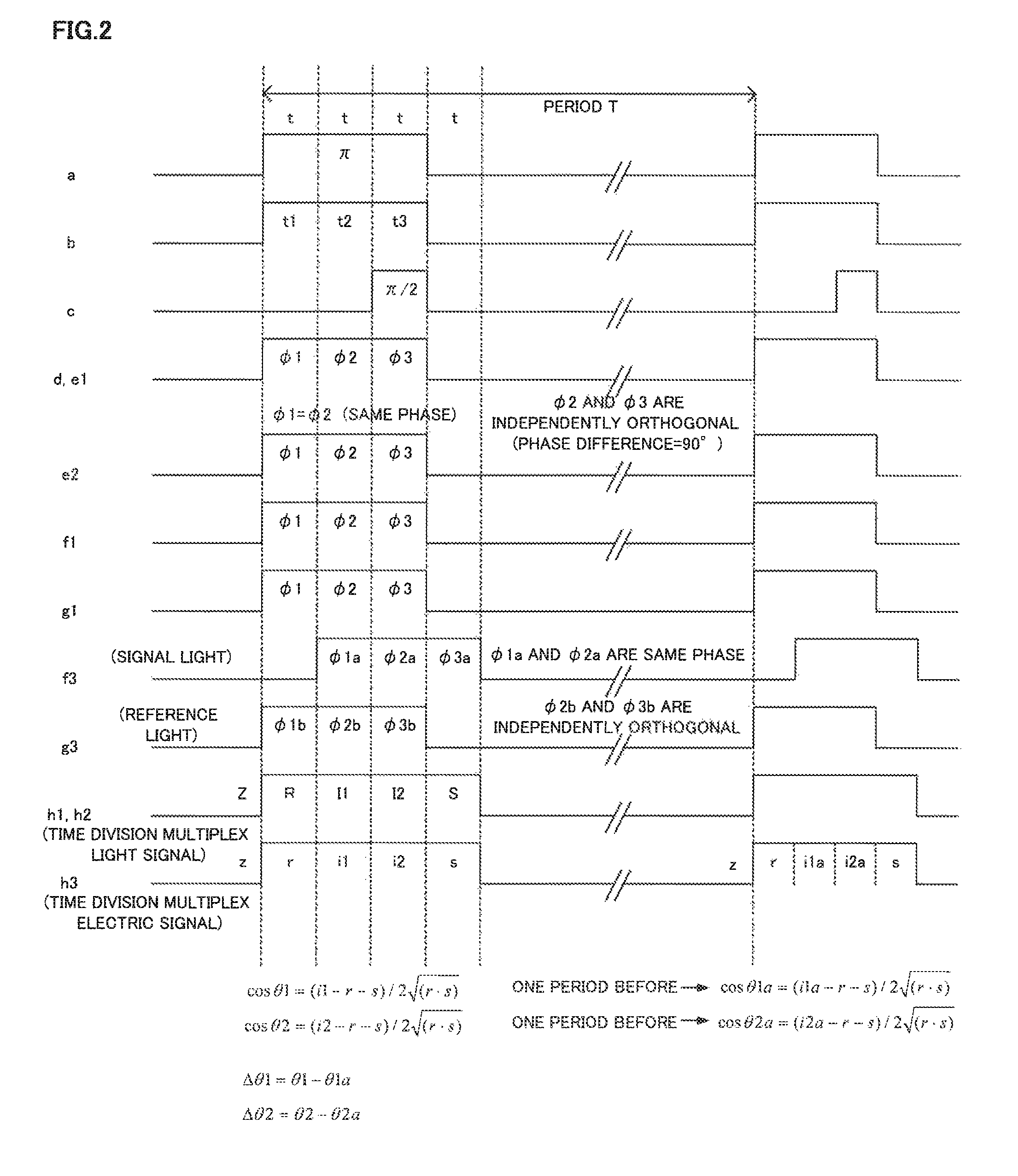Optical fiber sensor
a technology of optical fiber and sensor output, applied in the direction of force measurement, force measurement, optical property variation measurement, etc., can solve the problems of inability to keep the phase difference between the reference light and the signal light within this narrow range, inability to eliminate, and inaccuracy, etc., to reduce the system manufacturing cost, reduce the inaccuracy, and reduce the measurement error small
- Summary
- Abstract
- Description
- Claims
- Application Information
AI Technical Summary
Benefits of technology
Problems solved by technology
Method used
Image
Examples
Embodiment Construction
[0022]FIG. 1 is the example of the optical fiber sensor of the present invention, where a laser pulse generator 1, an optical sensor 2, and an arithmetic processor 3 are illustrated.
[0023]First, a laser pulse of 3t width in every T period is generated in the laser pulse generator 1, with which the light phase of front 2t portion is set to 0 degree (°) and last It portion 90 degree (°) in each other. The laser pulse is divided into two (2) by the optical coupler and one of which is applied to an optical sensor 2 through a t / 2 optical delay line. The other half of laser pulse is applied to the other input of the optical sensor 2. Both laser pulse phases are shifted in proportion to the external force applied to the optical sensor 2.
[0024]The reflected laser pulses, one through t / 2 optical delay line and the other directly, are combined by the optical coupler and the overall optical circuit forms a Michelson interferometer. The interferometer output laser pulse, i.e., the output optica...
PUM
| Property | Measurement | Unit |
|---|---|---|
| angle | aaaaa | aaaaa |
| pulse length | aaaaa | aaaaa |
| phase | aaaaa | aaaaa |
Abstract
Description
Claims
Application Information
 Login to View More
Login to View More - R&D
- Intellectual Property
- Life Sciences
- Materials
- Tech Scout
- Unparalleled Data Quality
- Higher Quality Content
- 60% Fewer Hallucinations
Browse by: Latest US Patents, China's latest patents, Technical Efficacy Thesaurus, Application Domain, Technology Topic, Popular Technical Reports.
© 2025 PatSnap. All rights reserved.Legal|Privacy policy|Modern Slavery Act Transparency Statement|Sitemap|About US| Contact US: help@patsnap.com



